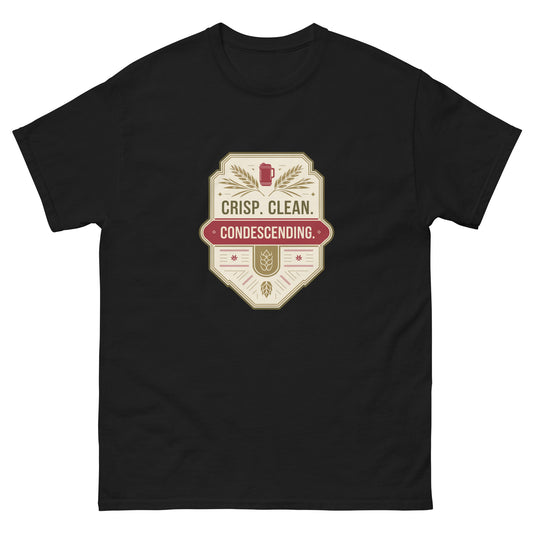The Science of Fermentation: What Every Homebrewer Needs to Know
Share
You’ve got the dream. You stand proudly in your kitchen (or let’s be real, your garage), beer glass in hand, and your mates are pouring out compliments about the crisp, refreshing taste of the brew you made *yourself*. Sounds pretty satisfying, doesn’t it? Here’s the thing—not only is this dream totally doable but understanding a bit of the science behind fermentation will make it way easier and way more fun. Let’s unravel the bubbling magic that turns ordinary ingredients into your next signature beer or spirit.
Wait, What *Is* Fermentation?
Fermentation is where the magic happens. In simple terms, it’s a chemical process where yeast (your microscopic brewing sidekicks) munch on sugars, turning them into alcohol and carbon dioxide. That’s right—the buzz in your beer is a direct result of some hardworking yeast going wild in your fermenter.
But fermentation isn’t just about the booze. It’s also why your beer has that gorgeous fizz and the distinctive flavor that makes it taste like, well, beer. Without fermentation, you’re looking at something closer to sugary tea. Not ideal, right?
The Key Players: Yeast, Sugar, and Time
Think of beer like a crew project. Each ingredient has its job, but the yeast? Oh, the yeast is the MVP. Different strains of yeast create different flavors and aromas, ranging from fruity and spicy to clean and crisp. That’s why choosing the right kind of yeast can make or break your brew.
Sugars are the yeast’s food source. No sugar, no party. But not all sugars are created equal. Malts from grains like barley give beer its backbone and color (and those toasty flavors you love), while adjuncts like honey or fruit can add unique twists.
And then there’s time. You can’t rush fermentation. Think of it like slow cooking—flavor develops best when you give the yeast enough time to work its magic. Rushing the process may leave your brew tasting overly sweet (read: leftover sugar) or a bit funky. Patience, my friend, patience.
Temperature: The Unsung Hero of Brewing
If yeast is the MVP, temperature is the coach. Too cold, and the yeast might go on strike. Too hot, and you risk creating off-flavors and overexcited yeast that fizzles out too fast. The sweet spot? It depends on the yeast strain, but beer brewing typically lands in the range of 18–24°C. Spirits might require slightly different conditions, depending on your setup.
Investing in a fermenter with temperature control or even a digital thermometer could be a game-changer. Remember, your yeast is living and breathing (metaphorically), and like all of us, it likes to get comfy while it works.
The Common Pitfalls and How to Dodge Them
Alright, while fermentation sounds straightforward, there are a few bumps that many homebrewers hit along the way. Let’s make sure you’re not one of them:
- Not enough sanitation: Fermentation is a one-way street. If any wild bacteria or molds wiggle their way into your brew, they will *ruin* it. Clean everything—like, obsessively. Sanitiser is your new best mate.
- Rushing the bottling: Tempting, I know. But bottling your beer before fermentation finishes can lead to exploding bottles (yes, that’s a thing) or flat, uninspiring beer. Let your yeast wrap up the job!
- Ignoring gravity readings: Hydrometers aren’t just for looking cool in your brewing kit. Monitor your brew’s gravity at the start and end of fermentation to check if it’s ready for the next step and ensure you’re hitting that sweet spot for alcohol content.
- Not enough yeast: A common rookie mistake is to under-pitch yeast. Too few yeast cells will struggle to finish the job, leaving you with a half-fermented brew and weird flavors. Follow the instructions on your yeast packet, and don’t think you can wing it.
Experimenting: Where the Real Fun Begins
Once you get the basics of fermentation down, the real fun starts. Try tweaking your ingredients! Experiment with different malts, hop varieties, or even adjuncts like coffee or vanilla. Dare to try your hand at brewing cider, mead, or a full-bodied stout. The possibilities are endless, but each starts with a solid understanding of that foundational fermentation process.
Pro tip: Keep a brewing journal. Write down every single detail—specific temperatures, ingredient ratios, and timeframes—so you can recreate your biggest wins (and avoid repeating the batches that went sideways).
Brewing on a Budget
Are you worried you might need some sort of laboratory to nail fermentation? Relax! Start small. A basic brewing kit and a bit of dedication is all you need. At Strathalbyn H Hardware’s homebrewing section, we specialise in beginner-friendly kits that make fermentation foolproof. You won’t need to break the bank or sell a kidney before you even start. And as your confidence grows, you can upgrade your setup at a pace that suits your goals (and wallet).
A Community of Craft Creators
The best part of becoming a homebrewer? Joining a community of people who love sharing tips almost as much as they love sharing beer. Reach out, compare recipes, and celebrate successes (and disasters—they make the best stories). Better yet, stop by Strathalbyn H Hardware. Not only can we hook you up with supplies and expert advice, but we’ll also cheer you on as you chase that dream of the perfect brew.
Your Brewing Adventure Starts Here
Look, fermentation might feel slightly daunting at first, but trust me—once you understand the basics, you’ll be amazed at how naturally it all starts to flow (pun intended). Whether you’re chasing the perfect pale ale, a bold IPA, or an inky porter, this process truly transforms time and ingredients into taste and triumph. And with the right gear, quality ingredients, and a dash of patience, anyone can brew something truly special.
So, go on—grab that brew kit, trust the science of fermentation, and in no time, you’ll be that mate bringing beers to the barbecue that everyone can’t stop talking about. 🍺 Cheers to that!
Candeece








